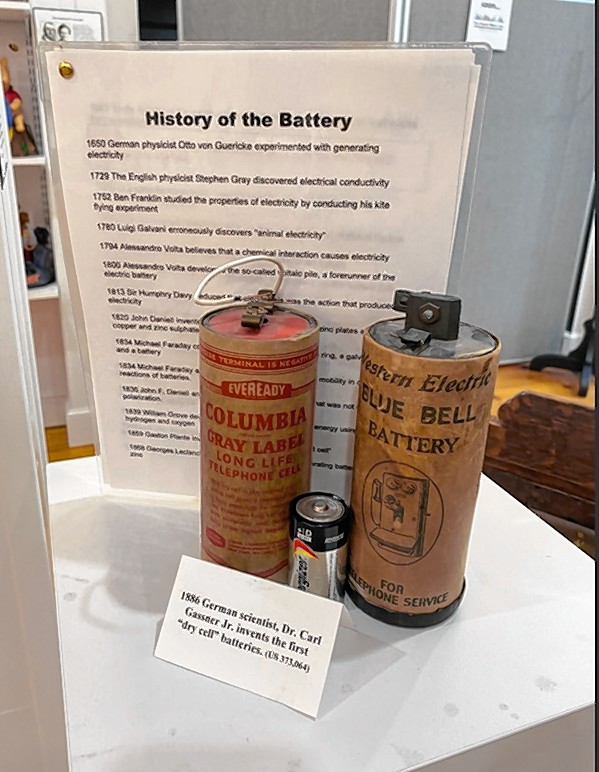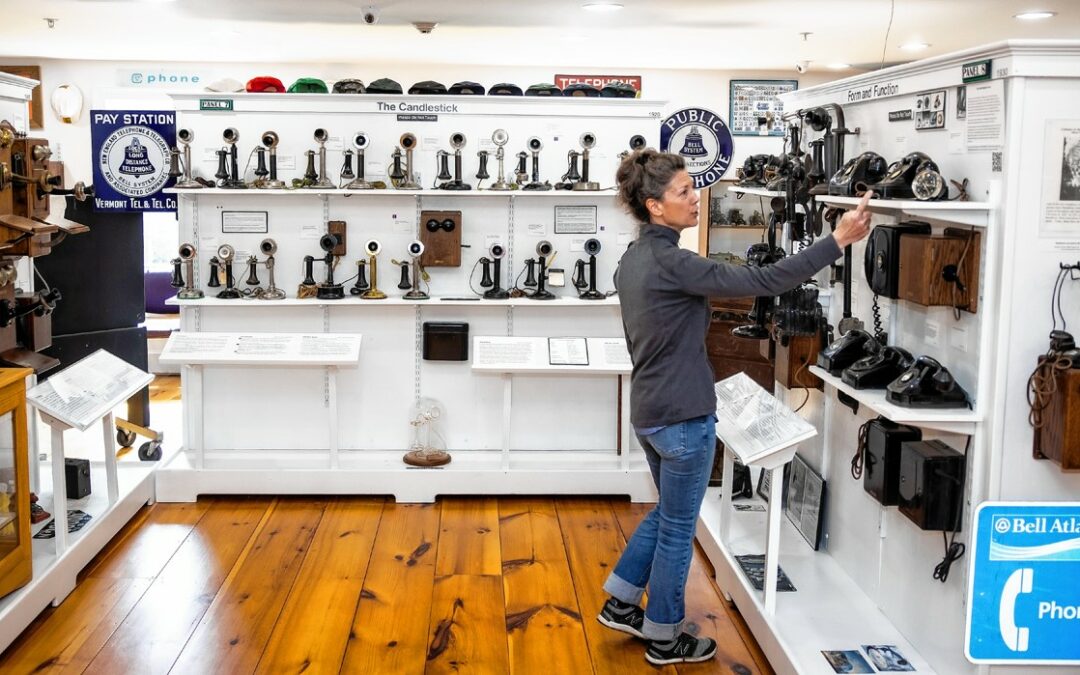There’s something a little surprising about one of New Hampshire’s best museums, the small but mighty New Hampshire Telephone Museum in Warner: You’re not supposed to touch most of the exhibits even though they’re the kind of thing we’ve touched all our lives.
“These are telephones and we’re all used to holding telephones,” said Graham Gifford, director of programming at the museum, which is chock full of “please don’t touch” signs. “People say ‘It’s just a telephone.’ But this is history, a museum – for us it’s a Monet and you wouldn’t touch a Monet!”
Museum employees and volunteers have to be constantly on the alert for visitors itching to pick up the Elvis phone, or dial a number on the chunky black landline phone that’s just like the one grandma had next to her couch, or poke the fascinating mechanism inside the earliest phones, which came with their own wet batteries.
There are a few exhibits you can touch, including a phone that pre-dates dials. And there will be a lot more touching at the museum’s new Sound Wave Lab, which opens Tuesday. It’s an interactive exhibit examining the technology and science behind aspects of the telephone and of sound itself, including sound waves compared to light waves, details of electrical circuits and aspects of hearing loss. Plus you can play a song by whacking tubes with flip-flops.
Learn more about it at the museum website: nhtelephonemuseum.org

I admit to being a N.H. Telephone Museum fanboy. It’s a wonderful example of an institution that looks at most of daily life, from culture to technology to local history to goofy trends, through a lens that is focused both by technology and geography. It manages to be entertaining without being silly, insightful without being stuffy, surprising while still being familiar. The New Hampshire Aviation Museum alongside Manchester airport is another example of a small local institution which does this difficult job well.
The N.H. Telephone Museum opened in 2005 in a small house (much expanded since then) on Depot Street in downtown Warner. It began as a way to display the vast collection of telephone material gathered by Dick Violette, a 50-year veteran of the Merrimack County Telephone Co., one of many small independent phone companies that formerly dotted the landscape.
It’s a shoestring operation compared to large science or art museums, with 2 ½ full-time positions. It could easily have become little more than a repository of outdated technology, interesting only to retired telephone technicians, or gotten overwhelmed by details of hyper-local history. Happily, it has managed to thread the needle.
There’s plenty of technology here, including a working bank of switches from analog days – the clickety-clacks when you dial a number are mesmerizing – and plenty of phones and old advertisements to get nostalgic over. There’s also lots of local history, including working switchboards from the days when they were located in private homes and details from tiny one-town phone companies that nobody else remembers.
Gifford says this mix is reflected in the customer base. “Retired people come to geek out … medium (age) come to relive memories. And young people have no idea what any of this means,” she said, only half-joking.
One example of the latter involved a youngster who freaked out after being shown a telephone book, something they had never encountered. The idea of everybody agreeing to have their name and address printed for the whole world to see was downright shocking to a child raised in a world where preserving your privacy is a constant struggle.
Speaking of struggles, the museum struggles with the image of being “just” a memorial to your parents’ old telephone. “People say: It’s a phone museum – is 10 minutes good?” for a visit, Gifford said.
They’ve toyed with changing the name but nobody has come up with a good replacement (Telecom Museum? Communication Museum? Reach Out And Touch Someone Museum?).
There’s also the cell phone revolution to think about. It won’t be long before most of the public that they’re trying to attract will have no memory of landlines. Unless the museum can reflect the evolution to a wireless world, it could become the telecommunications version of an exhibit on horse-drawn carriages.
But that’s a future concern. If you want an intriguing and entertaining afternoon from an unexpected source, you should check it out. Just be careful what you touch!


 Return to the Concord Monitor
Return to the Concord Monitor
A wealth of information and history excellently displayed!
I tell my children about Mrs Rarick having a phone exchange in her home and needing to have her connect your call. No dial phones. Her husband died in WW 2 and this was her income. They just can’t imagine this scenario.